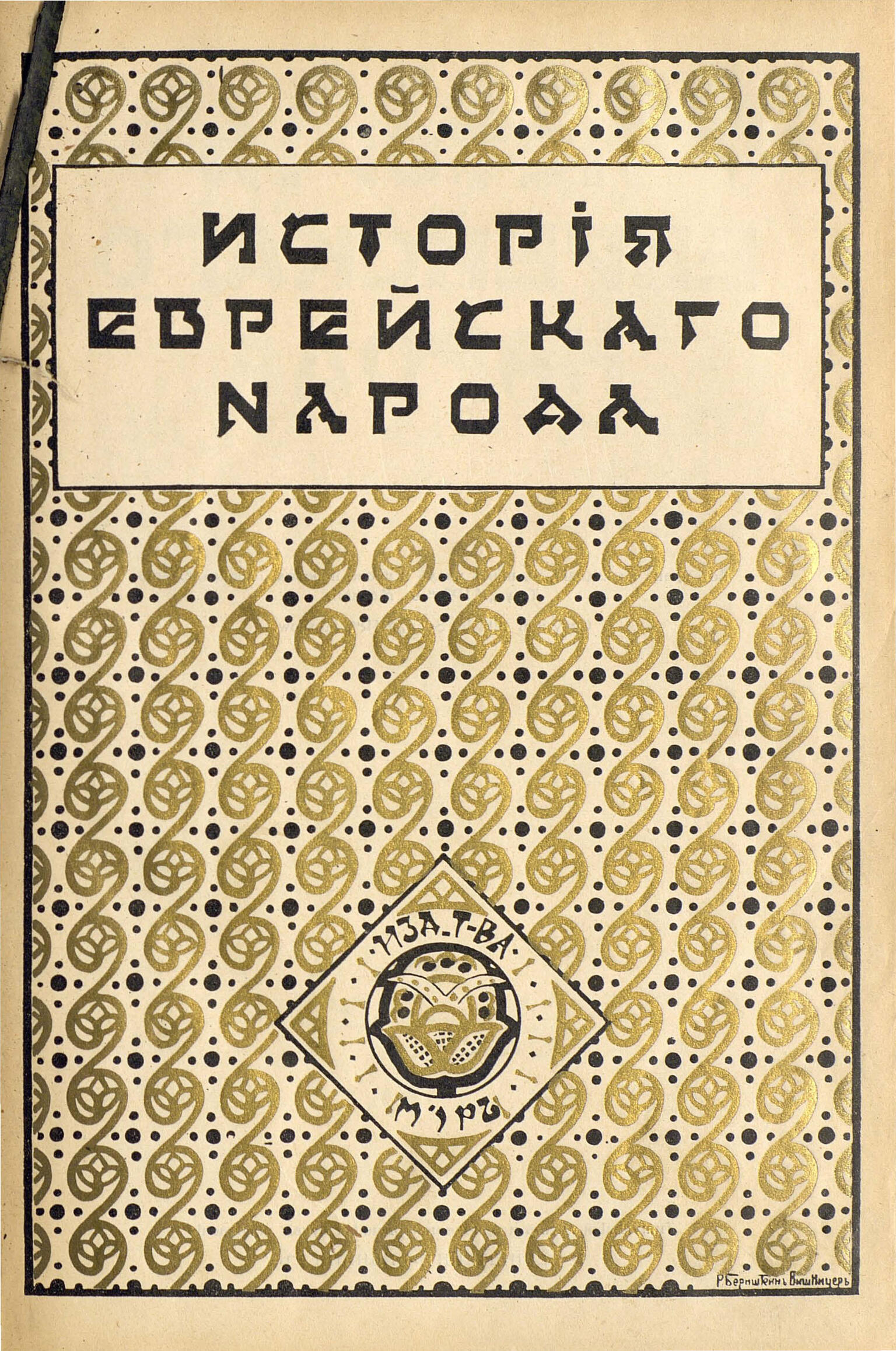Cover Design for "Istoria evreiskogo naroda"
Rachel Bernstein-Wischnitzer
1914
Credits
Published in: The Posen Library of Jewish Culture and Civilization, vol. 7.
You may also like
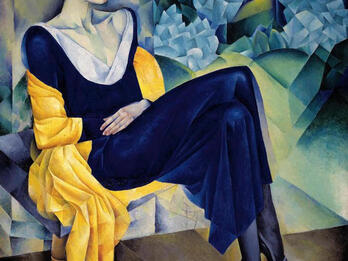
Portrait of Anna Akhmatova
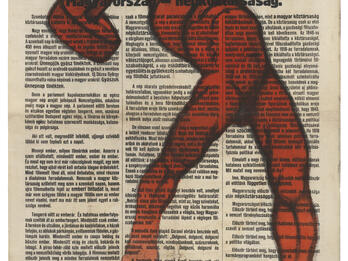
Red Hammer Man with Chains
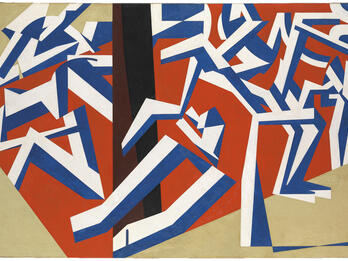
The Mud Bath
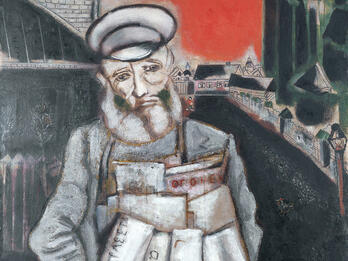
The Newspaper Vendor
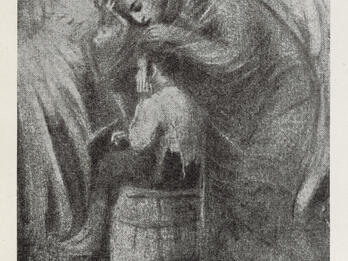
The Lad Bialik
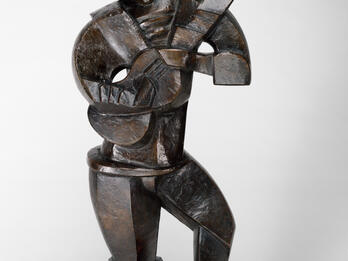
Sailor with Guitar
Creator Bio
Rachel Bernstein-Wischnitzer
Born in Minsk into a middle-class Russified family, Rachel Bernstein-Wischnitzer studied art, art history, and architecture at universities in Heidelberg, Brussels, Paris, and Munich; in 1907 she became one of the first women in Europe to obtain a degree in architecture. In 1912, Bernstein married Mark Wischnitzer, who was then working on the Evreiskaia entsiklopediia, the great Russian-Jewish encyclopedia project; it was there that Bernstein-Wischnitzer would publish some of her first articles on Jewish visual arts, focusing on synagogue architecture. Relocating to Berlin in the early 1920s, Bernstein-Wischnitzer coedited the Hebrew-Yiddish journal Rimon/Milgroym, where she pioneered the field of Jewish art history in her articles. Bernstein-Wischnitzer was also a practicing artist, as evident from the cover design for the Russian-language History of the Jewish People, a project of the linguistically assimilated but Jewishly engaged intelligentsia in St. Petersburg with which the Wischnitzers associated. With the closure in 1938 of the Berlin Jewish Museum, where she had been working, she moved to Paris and then New York, where she researched synagogue architecture and Jewish art.
Places:
You may also like

Portrait of Anna Akhmatova

Red Hammer Man with Chains

The Mud Bath

The Newspaper Vendor

The Lad Bialik



